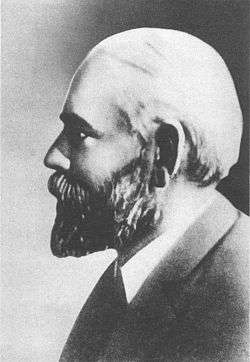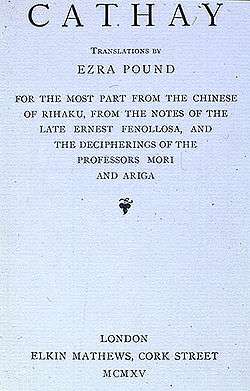Ernest Fenollosa


Ernest Francisco Fenollosa (February 18, 1853 – September 21, 1908) was an American art historian of Japanese art, professor of philosophy and political economy at Tokyo Imperial University. An important educator during the modernization of Japan during the Meiji Era, Fenollosa was an enthusiastic Orientalist who did much to preserve traditional Japanese art.
Biography
Fenollosa was the son of Manuel Francisco Ciriaco Fenollosa, a Spanish pianist,[1] and Mary Silsbee and attended Hacker Grammar School in Salem, Massachusetts, and the Salem High School before going on to study philosophy and sociology at Harvard College, where he graduated in 1874. After a year at the art school of the Boston Museum of Fine Arts, during which time he married Elizabeth Goodhue Millett, he traveled to Japan in 1878 at the invitation of American zoologist and Orientalist Edward S. Morse to teach political economy and philosophy at the Imperial University at Tokyo. There he studied ancient temples, shrines and art treasures with his assistant, Okakura Kakuzō.
During his time in Japan, Fenollosa helped create the nihonga (Japanese) style of painting with Japanese artists Kanō Hōgai (1828–1888) and Hashimoto Gahō (1835–1908). In May 1882 he delivered a lecture on "An Explanation of the Truth of Art," which was widely circulated and quoted.[2]
After eight years at the University, he helped found the Tokyo School of Fine Arts and the Tokyo Imperial Museum, and subsequently acted as its director in 1888. In this period, he helped to draft the text of a law for the preservation of temples and shrines and their art treasures.[3]
Fenollosa converted to Buddhism and was given the name Teishin. He was also granted the name Kano Eitan Masanobu, placing him in the lineage of the Kanō school, who had served as painters to the Tokugawa shoguns. While resident in Japan, Fenollosa's accomplishments included the first inventory of Japan's national treasures, leading to the discovery of ancient Chinese scrolls brought to Japan by traveling monks centuries earlier, and rescuing many Buddhist artifacts which would otherwise have been destroyed under the Haibutsu kishaku movement. For these achievements, the Emperor Meiji of Japan decorated him with the Order of the Rising Sun and the Order of the Sacred Treasures.
Fenollosa was able to amass a large collection of Japanese art during his stay in Japan. In 1886, he sold his art collection to Boston physician Charles Goddard Weld (1857–1911) on the condition that it go to the Museum of Fine Arts in Boston, and in 1890 he returned to Boston to serve as curator of the department of Oriental Art. There Fenollosa was asked to choose Japanese art for display at the 1893 World Columbian Exposition in Chicago. He also organized Boston's first exhibition of Chinese painting in 1894. In 1896, he published Masters of Ukiyoe, a historical account of Japanese paintings and color prints exhibited at the New York Fine Arts Building. However, his public divorce and immediate remarriage in 1895 to the writer Mary McNeill Scott (1865–1954) outraged Boston society, leading to his dismissal from the Museum in 1896.
He returned to Japan in 1897 to accept a position as Professor of English Literature at the Tokyo Higher Normal School at Tokyo. Lafcadio Hearn considered Fenollosa a friend; and Hearn almost believed that he visited the professor's home too often.[4]
In 1900, he returned to the United States to write and lecture on Asia. His 1912 work in two volumes concentrates on art before 1800 but offers Hokusai's prints as a window of beauty after Japanese art had become too modern for Fenollosa's taste: "Hokusai is a great designer, as Kipling and Whitman are great poets. He has been called the Dickens of Japan." Arthur Wesley Dow said of Fenollosa 'he was gifted with a brilliant mind of great analytical power, this with a rare appreciation gave him an insight into the nature of fine art such as few ever attain'[5]
After his death in London in 1908, Fenollosa's unpublished notes on Chinese poetry and Japanese Noh drama were confided by his widow to noted poet Ezra Pound who, with William Butler Yeats, used them to solidify the growing interest in Far Eastern literature among modernist writers. Pound subsequently finished Fenollosa's work with the aid of Arthur Waley, the noted British sinologist.[6]
Fenollosa's body was cremated in London, and his ashes returned to the Hōmyō-in chapel of Mii-dera high above Lake Biwa, (where he had been tonsured) for burial. His tombstone was paid for by the Tokyo School of Fine Arts.
Criticism
At a Harvard lecture of 2011, Benjamin Elman refers to the Epochs of the Chinese and Japanese Art (1912) where Fenollosa compares "degeneration" of the late imperial Chinese art to that which befell the high antique art of Europe in Byzantium ("the poorest of the Byzantine mosaics"; "the only hope for the hopeless is to perceive itself to be hopeless"). According to Elman, Fenollosa's perception was influenced by the political and military defeats of the Qing empire.[7]
See also
Notes
- ↑ Foreword
- ↑ Marra, Michael F. (2002). Japanese hermeneutics, pp. 97-98., p. 97, at Google Books
- ↑ "Ernest F. Fenollosa" in Encyclopædia Britannica.
- ↑ Bisland, pp. 412–414.
- ↑ Dow, Arthur Wesley, Composition: A Series of Exercises in Art Structure for the Use of Students and Teachers, Boston Double day Page 1913
- ↑ "Fenollosa, Pound and the Chinese Character," Yale Literary Magazine 126.5 (1958): 24-36. Reprinted: Pinyin.info (2010)
- ↑ Reischauer Lectures, Harvard University 2011 00:52 ff.
Bibliography
- The Masters of Ukioye: a Complete Historical Description of Japanese Paintings and Color Prints of the Genre School, New York: The Knickerbocker Press, 1896
- Epochs of Chinese and Japanese Art, London: William Heinemann, 1912
- "Noh" or Accomplishment: A Study of the Classical Stage of Japan, with Ezra Pound, London: Macmillan and Co., 1916
- The Chinese Written Character as a Medium for Poetry, composed by the Ernest Fenollosa, edited by Ezra Pound after the author's death, 1918.
Further reading
- Bisland, Elizabeth. (1906). The Life and Letters of Lafcadio Hearn. New York: Houghton, Mifflin and Company.
- Brooks, Van Wyck, Fenollosa and His Circle, with Other Essays in Biography, New York: Dutton, 1962
- Chisolm, Lawrence W., Fenollosa: the Far East and American Culture, New Haven: Yale University Press, 1963
- Fenollosa, Mary McNeill. "Preface." Epochs of Chinese and Japanese Art: an Outline History of East Asiatic Design, New York: Frederick A. Stokes, 1912. Reprint by ICG Muse, 2000. ISBN 4-925080-29-6
- Kurihara Shinichi, Fuenorosa to Meiji bunka, Tokyo: Rikugei Shobo, Showa 43,1968
- Marra, Michael F. (2002). Japanese hermeneutics: Current Debates on Aesthetics and Interpretation. Honolulu: University of Hawai'i Press. ISBN 9780824824570; OCLC 237578040
- Tepfer, Diane, "Enest Fenollosa," in The Dictionary of Art, 10: 887
- Warner, Langdon, "Ernest Francisco Fenollosa," in the Dictionary of American Biography, vol. 6. New York: C. Scribner's sons, 1931, pp. 325–26
- Ezra Pound, Cathay: For the Most Part from the Chinese of Rihaku, from the notes of Ernest Fenollosa, and the Decipherings of the Professors Mori and Ariga, London: Elkin Mathews, 1915.
External links
| Wikimedia Commons has media related to Ernest Fenollosa. |
- Works by Ernest Fenollosa at Project Gutenberg
- Works by or about Ernest Fenollosa at Internet Archive
- Works by Ernest Fenollosa at LibriVox (public domain audiobooks)

- Read Fenollosa's Epochs of Chinese & Japanese Art on line